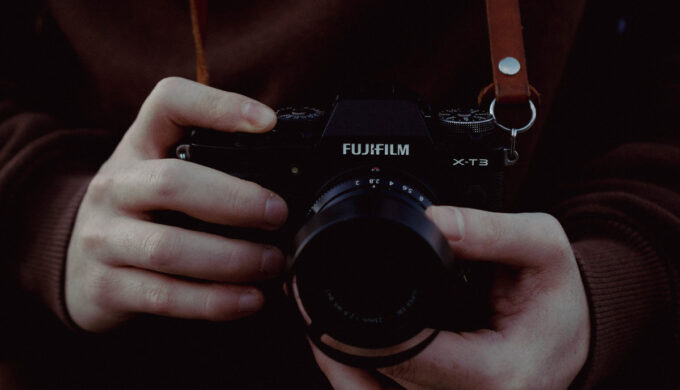ブログ担当 ガラエフ
Shooting Cinematic Footage with Ordinary Mirrorless Cameras

Introduction
In recent years, the popularity of mirrorless cameras has soared not only for traditional photography but also for creating cinematic products. This article explores why mirrorless cameras are sufficient for shooting cinematic footage and discusses various aspects of cinematic videography.
Why are mirrorless cameras enough for cinematic footage?
Mirrorless cameras have gained traction in the world of cinematic videography for several reasons. Firstly, their compact and lightweight nature makes them ideal for capturing motion and shooting in tight spaces. They can be easily mounted on handheld rigs, gimbals, or drones, providing a versatile and mobile shooting experience.
Considering their current capabilities and the anticipated advancements in mirrorless camera technology, they are poised to play an increasingly important role in cinematic filmmaking.
Which lens should you choose for different situations?
Choosing the right lens depends on the desired shot and the context of the scene. Here are some commonly used lenses in cinematic videography:
- 85mm: This lens is often favored for capturing close-ups and portraits, as it provides a narrow field of view and shallow depth of field, resulting in a pleasing background blur and subject isolation.
- 24mm: A wide-angle lens like the 24mm is suitable for establishing shots, landscapes, and capturing expansive scenes. It allows you to include more elements within the frame while maintaining visual depth.
- Telephoto Lens: Telephoto lenses, such as the 70-200mm range, are valuable for capturing distant subjects or achieving a compressed perspective. They can be used for capturing details or creating a sense of intimacy in a scene.
- Anamorphic Lens: Anamorphic lenses are known for their unique aspect ratios and characteristic flares. They can create a distinct cinematic look, enhancing the visual aesthetics of your footage.
Remember, the lens choice should align with your creative vision and the story you want to tell.
Why does the shutter speed have to be 2X the FPS? What is a shutter angle?
In cinematic videography, maintaining the right shutter speed is crucial for achieving a natural and smooth motion blur. The general rule of thumb is to set the shutter speed to double the frame rate (FPS) you are shooting at. For example, if shooting at 24 frames per second, the ideal shutter speed would be 1/48th of a second.
Shutter angle is another way to control the exposure time in certain cinema cameras. It refers to the angle of the rotating shutter disc in the camera, which determines the duration each frame is exposed. In modern digital cameras, the shutter angle is often simulated digitally to replicate the traditional film camera characteristics.
Can you use a cheap compact camera and gimbal for cinematic footage?
While high-end cameras and gimbals are often preferred for cinematic videography, it is still possible to achieve cinematic results with affordable equipment. Compact cameras with good image quality and manual control options can produce impressive footage when used creatively. Similarly, affordable gimbals can provide stabilization and smooth camera movements, enhancing the cinematic feel of your shots. Remember, it's the skill, creativity, and understanding of cinematic techniques that matter most, regardless of the equipment used.
Can anyone shoot cinematic videos?
Yes, anyone can shoot cinematic videos! With access to affordable and capable camera equipment, along with online resources and tutorials, aspiring filmmakers and enthusiasts can learn the techniques and principles of cinematic videography. It takes practice, experimentation, and a deep understanding of storytelling, composition, lighting, and editing techniques to create compelling cinematic videos.
While technical knowledge and equipment certainly play a role, the true essence of cinematic videography lies in the ability to convey emotions, capture captivating visuals, and tell a meaningful story. With dedication and passion, anyone can develop the skills necessary to produce cinematic videos.
It's important to study and analyze the work of renowned filmmakers, learn from their techniques, and apply those principles to your own projects. Experiment with different camera angles, lighting setups, and editing styles to find your unique voice and cinematic style.
Collaboration is also key in the world of cinematic videography. Working with a team of talented individuals who specialize in areas such as cinematography, sound design, and production can elevate the overall quality of your videos and bring your creative vision to life.
In conclusion, while having high-end equipment can enhance the production value of your cinematic footage, it is ultimately the artistic vision, storytelling skills, and technical expertise that will make your videos truly cinematic. With practice, dedication, and a deep understanding of the craft, anyone can shoot cinematic videos that captivate audiences and evoke powerful emotions.


